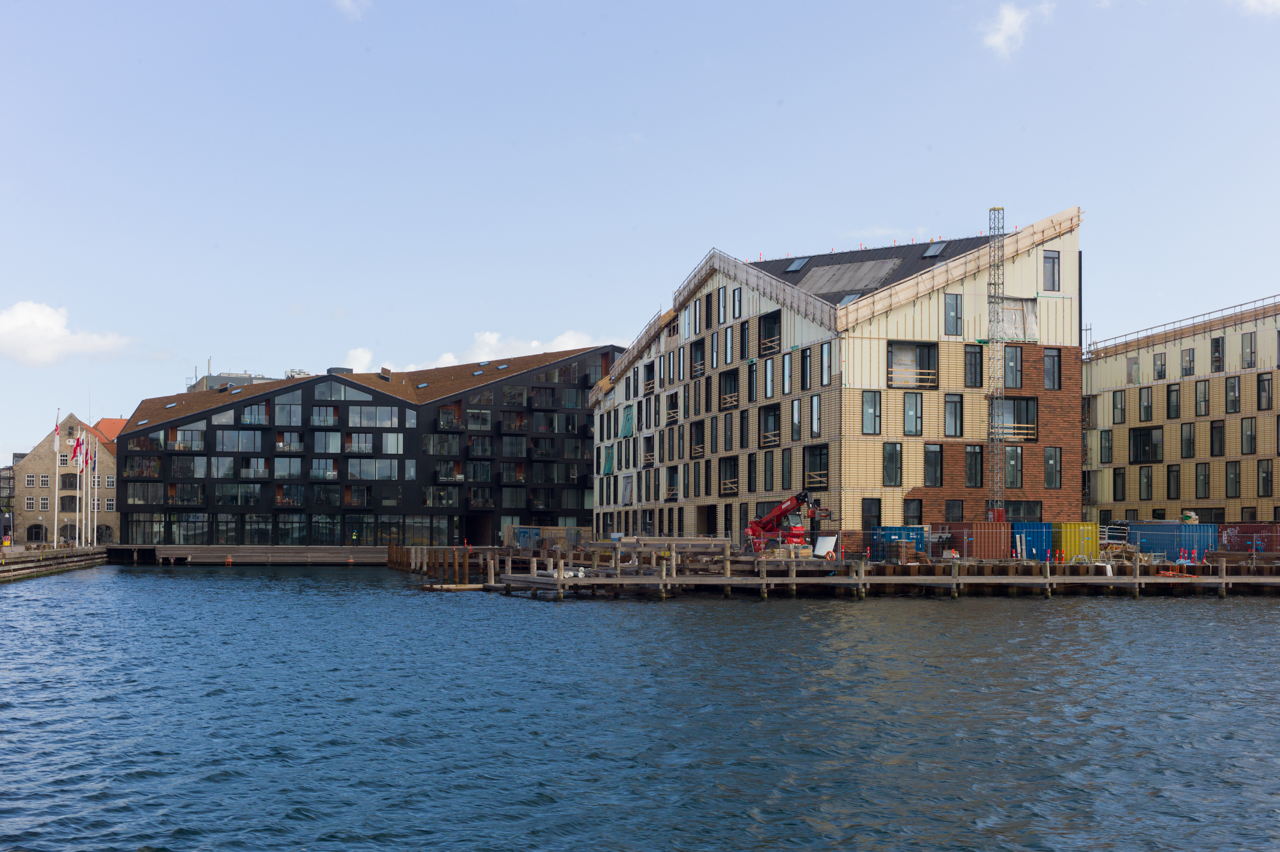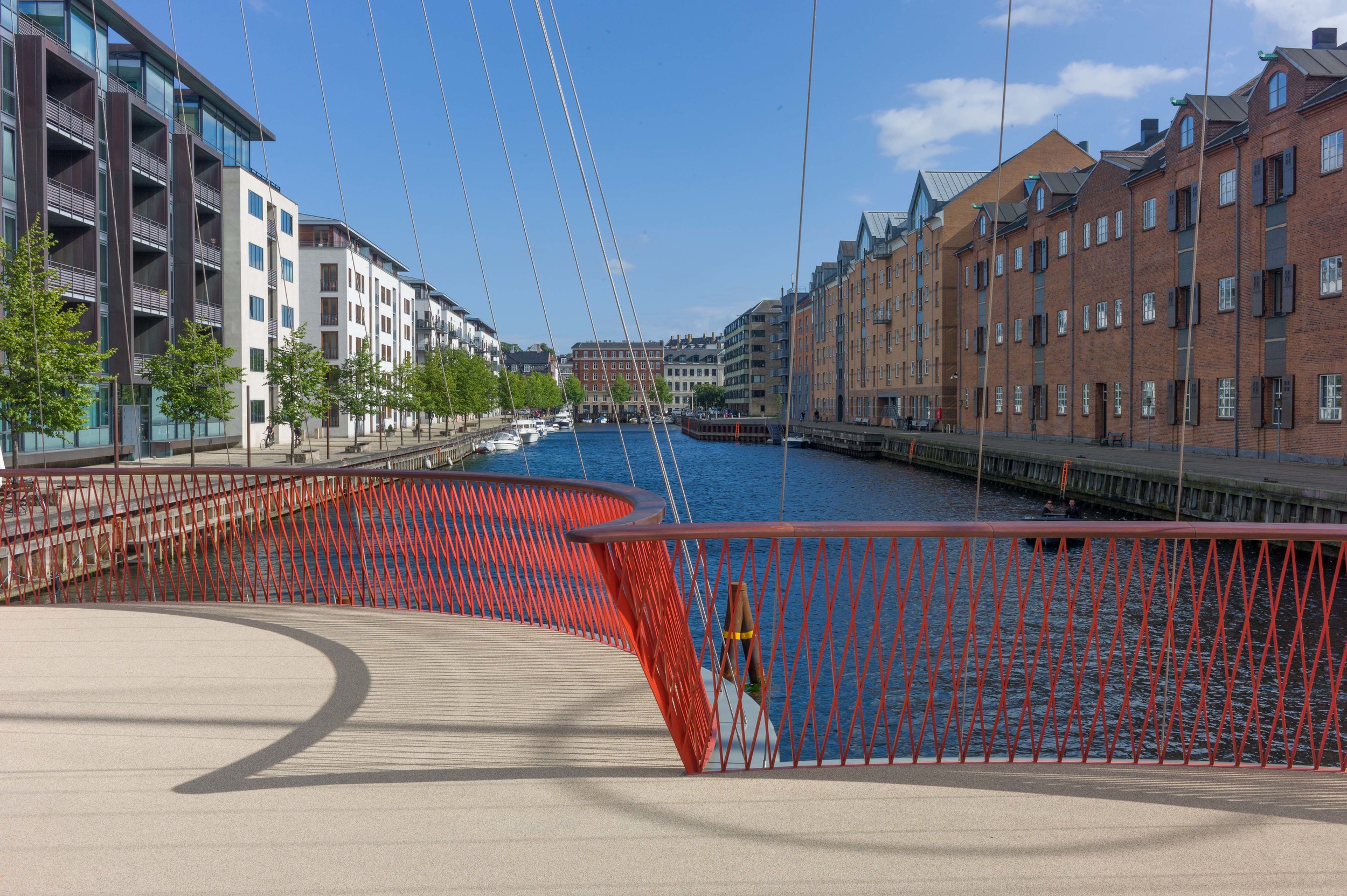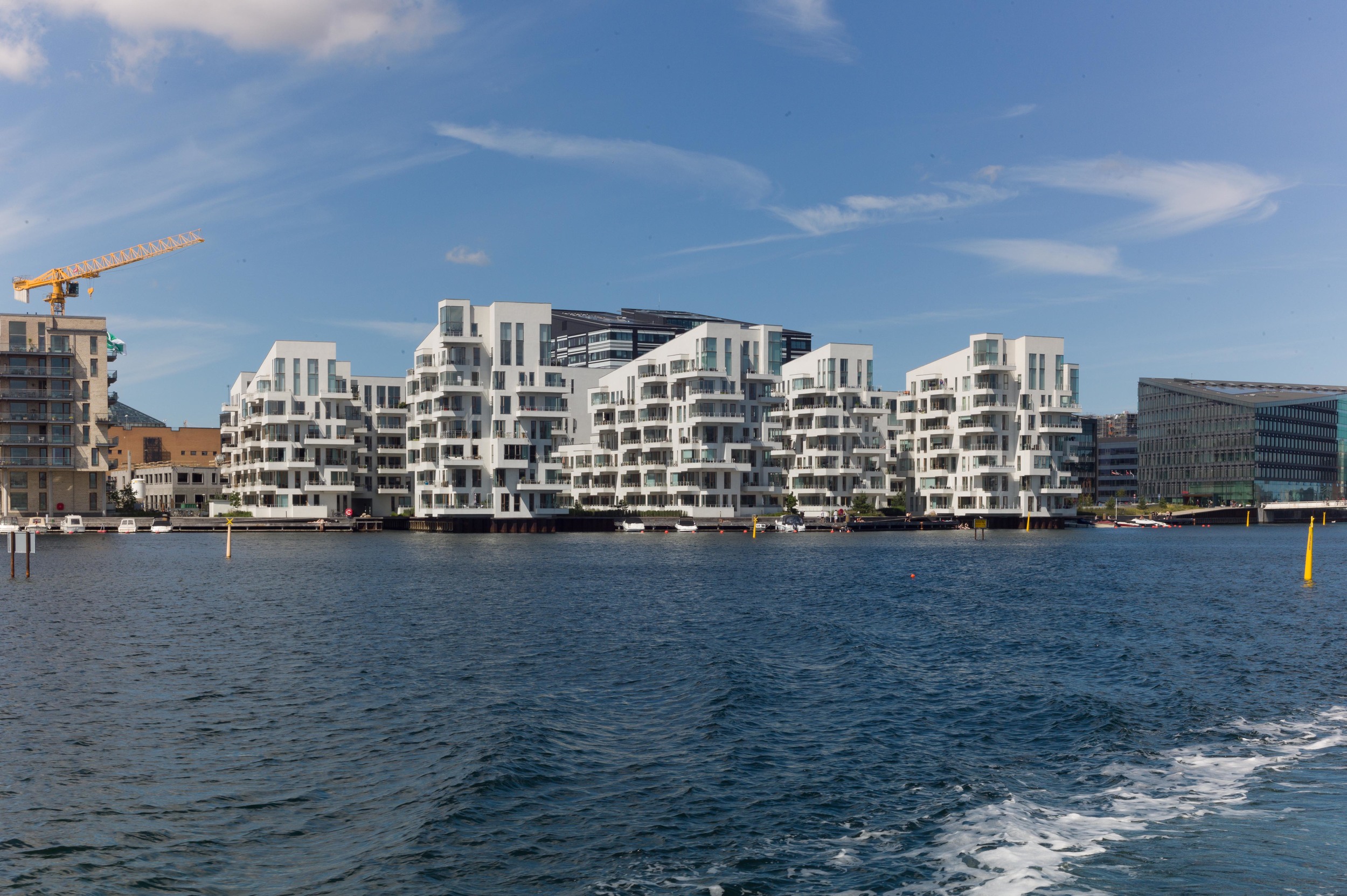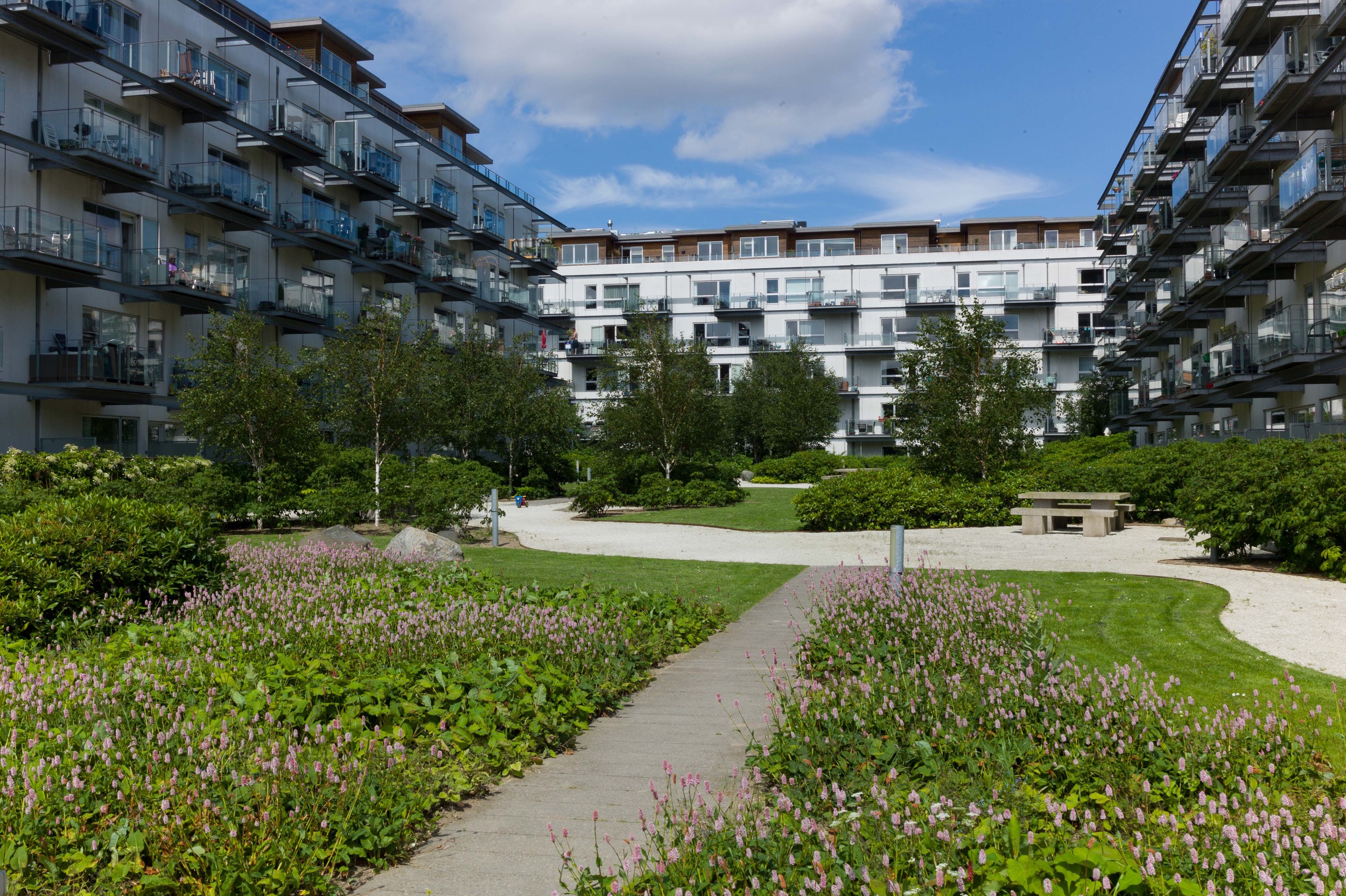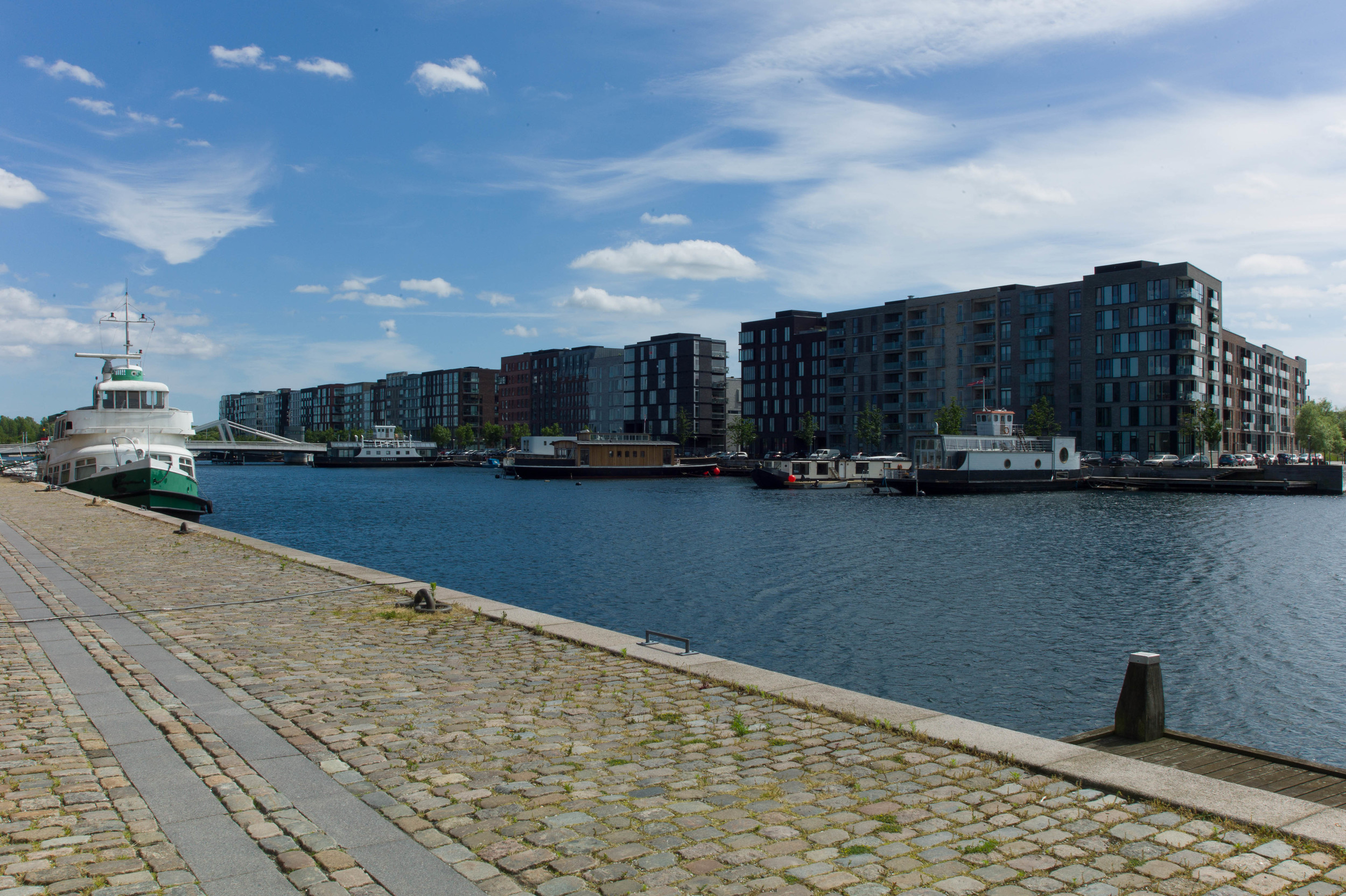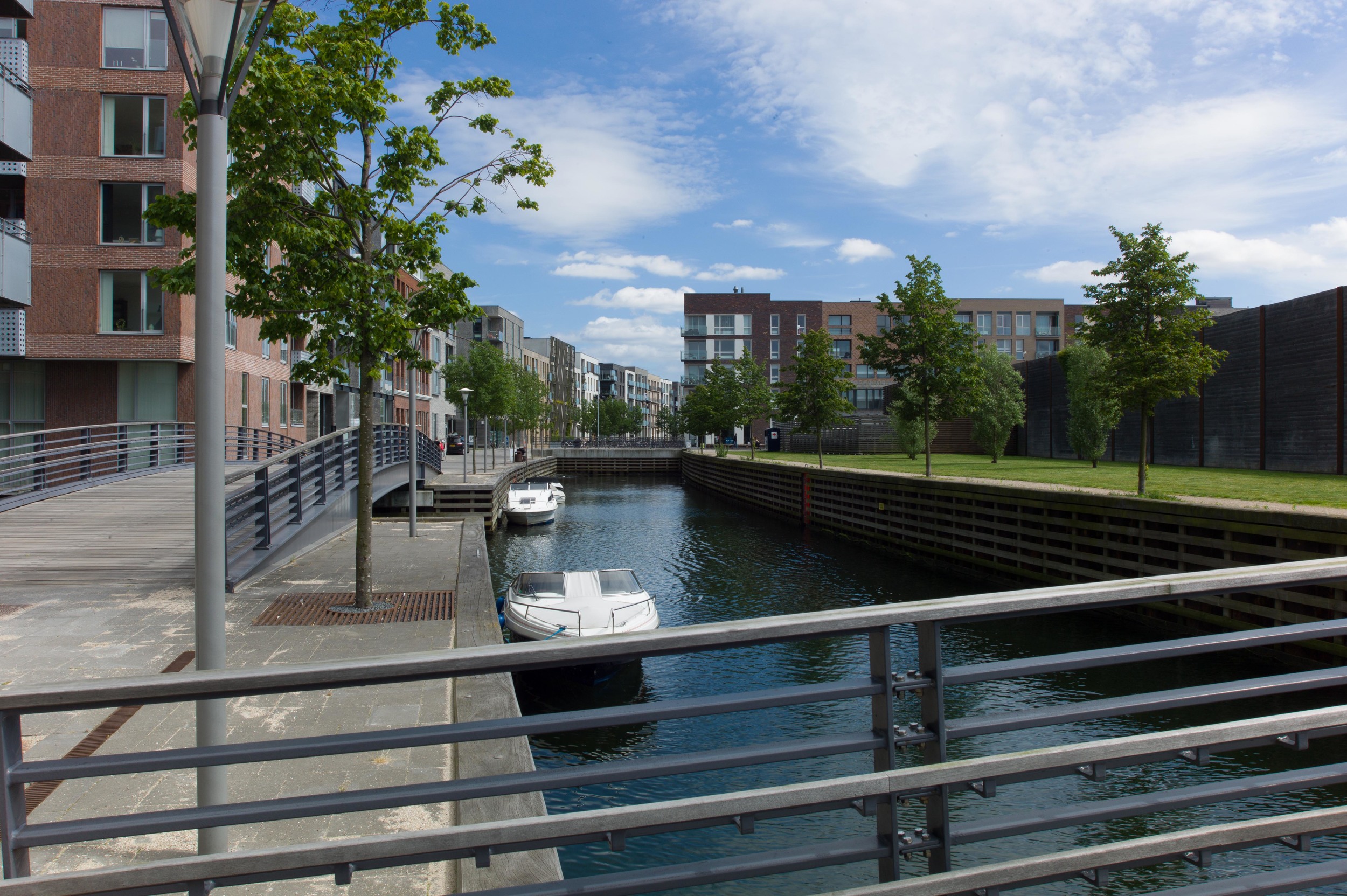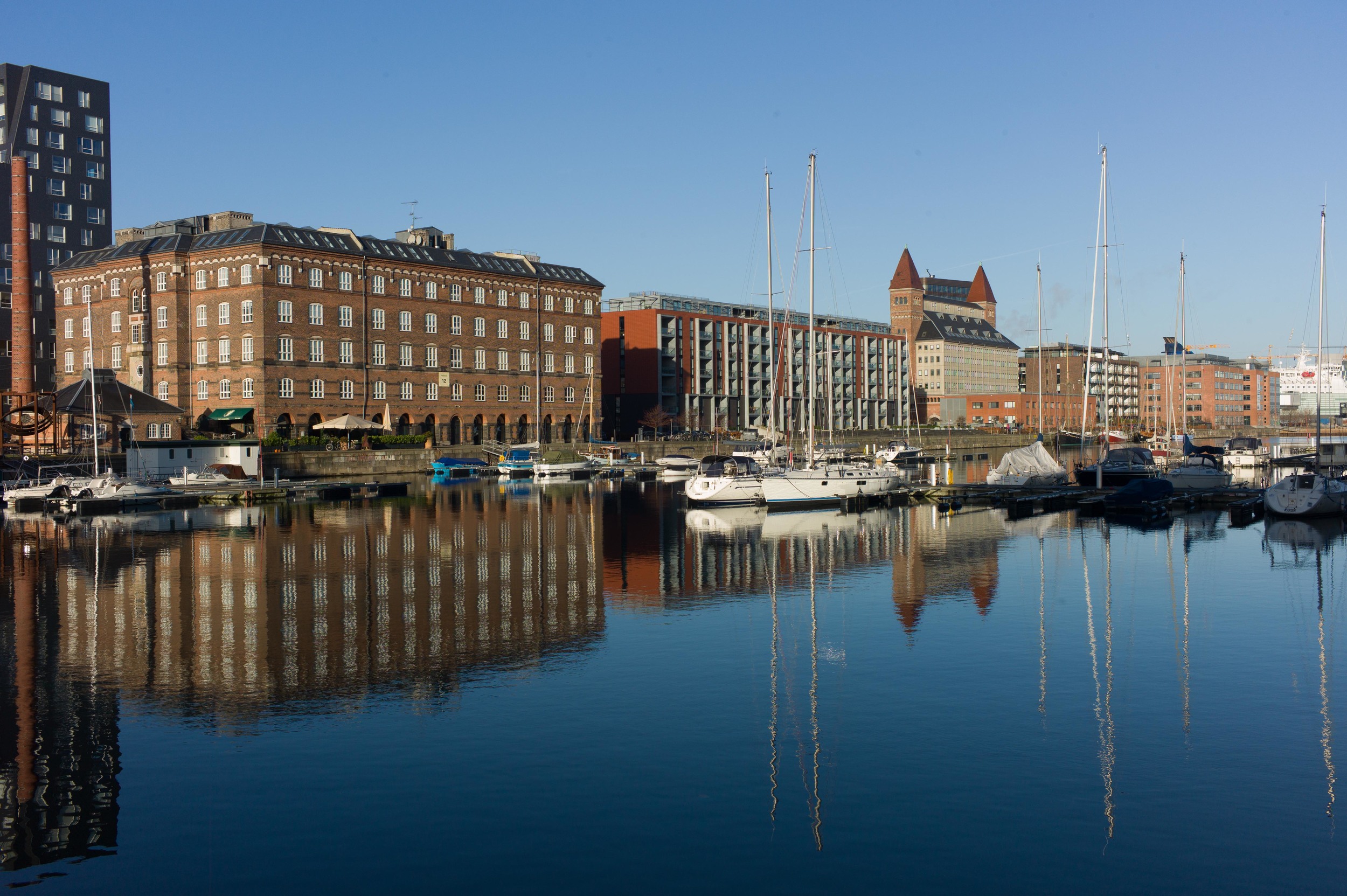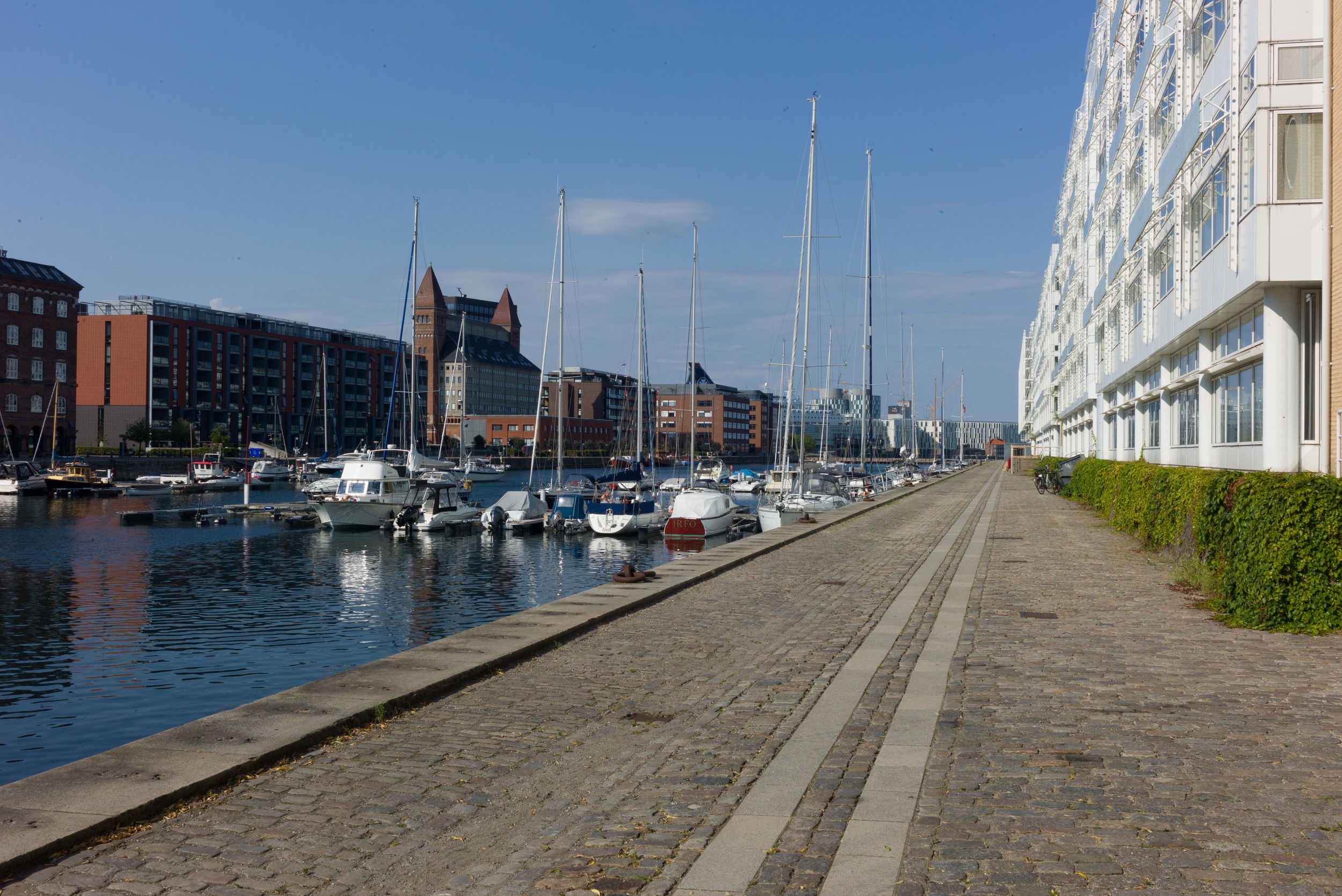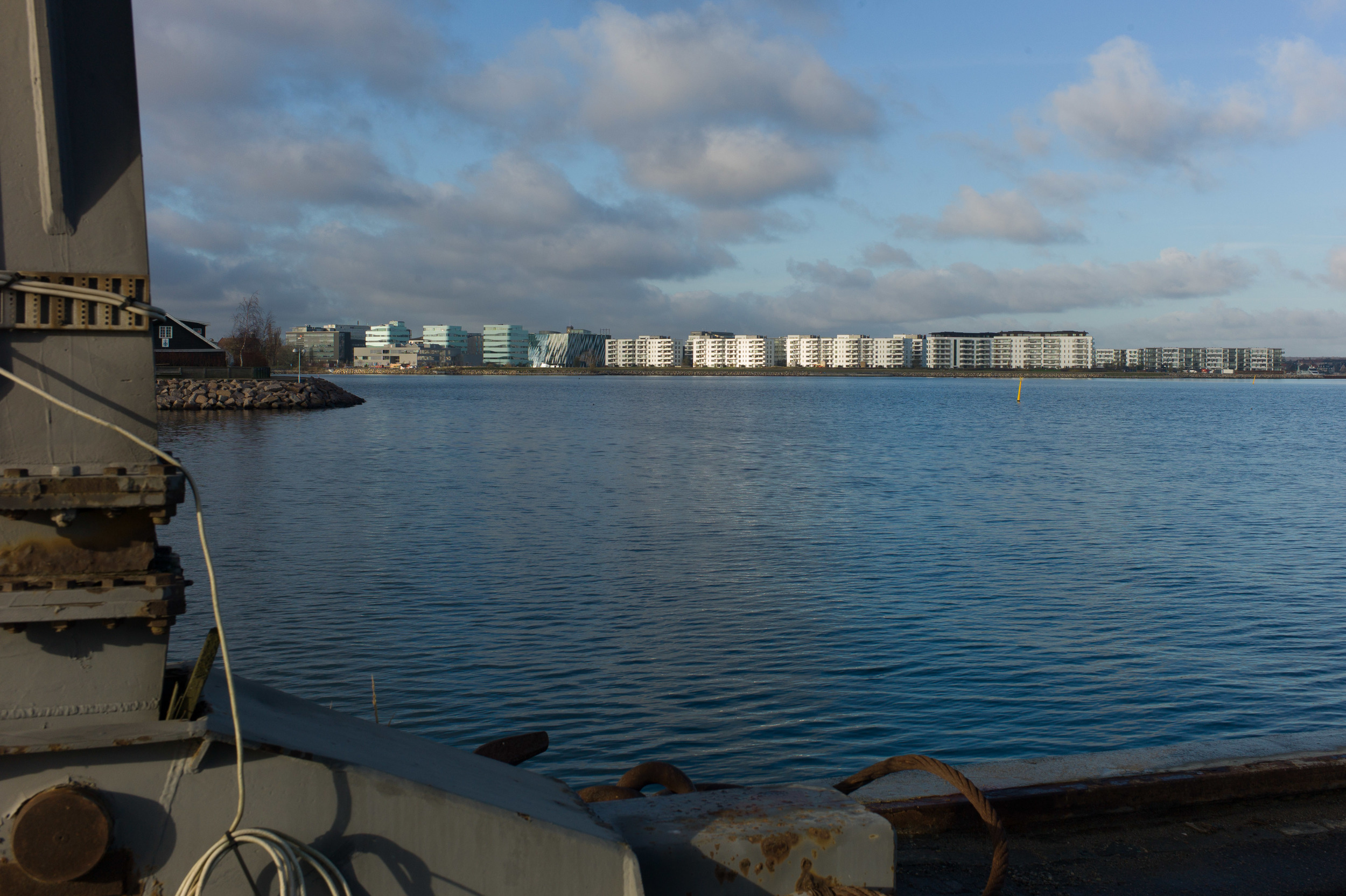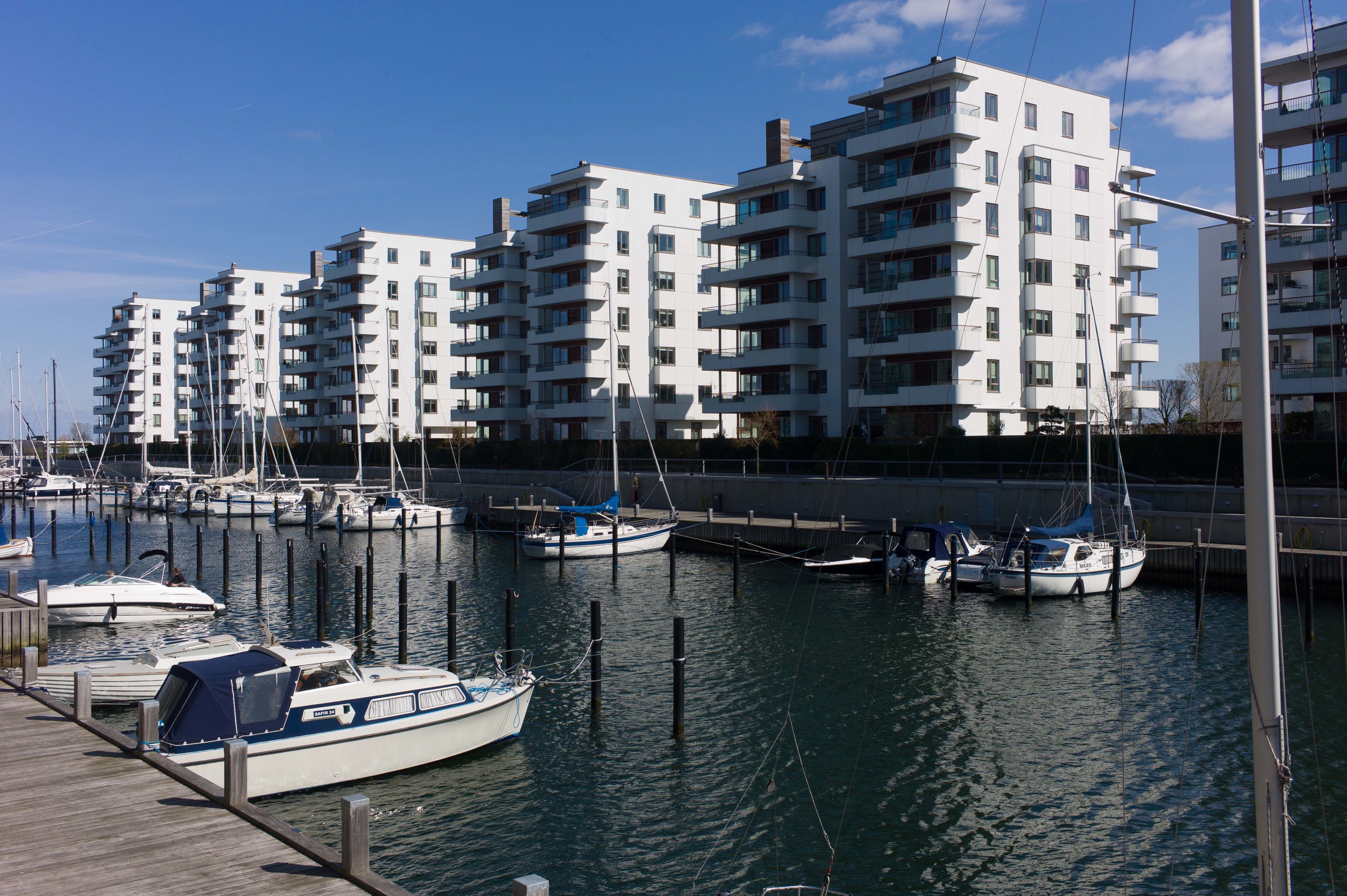green and open space in Vesterbro
/Halmtorvet looking west towards Sønder Boulevard with the Meat Market area immediately to the left
In a densely built up residential area like Vesterbro, natural planting of grass and trees is important, not just in larger open spaces for recreation and relaxation but in smaller areas to break up visually the mass of masonry, brick and tarmac.
At the centre of the area is Skydebanehaven, a large rectangular space surrounded by the backs of buildings so that it is more like a large courtyard. It is on the site of what was a private shooting range so presumably it was originally open ground with gravel or grass but now has a large number of mature trees. At the south-west corner it has been opened out to adjoining streets with the demolition of some rows of slum housing but it still seems like a well-kept local secret that is hidden away behind apartment buildings and, from the Istedgade side, is entered through a doorway in a forbidding high blank brick wall that closes off a short street of apartment buildings.
Enghave Park
The other large area of grass and trees is Enghave Park at the far west end of Vesterbro laid out in 1929 specifically as an open area with large apartment buildings of that period on the north, west and south sides.
More recent is Saxopark - a long strip of garden created when slum houses to the west of Skydebanehaven were demolished, courtyards cleared of tightly-packed infill and a line of new apartment buildings were constructed.
Saxopark
Sønder Boulevard
Halmtorvet and Sønder Boulevard, its extension west, which run across the south edge of the area was a major road for traffic in and out of the city. As part of a concerted plan to improve Vesterbro, the far end of the road was closed to traffic and the roads, now restricted to local traffic have been reduced in width and the central area of grass widened for space for seating, picnic tables, sports equipment and new play areas for children. The city end has extensive areas of water with fountains, areas for seating and cobbled and gravelled areas used for flea markets, food fairs and other events. Close to the Meat Market area, also being improved, the remodelling of the street has encouraged new restaurants and cafes to the area and most now move seats and table outside to the pavement.
Litauens Plads and Knoldens Plads
There are also relatively small squares through Vesterbro with mature trees in front of major churches - including the Eliaskirken facing onto Vesterbrogade, the church at the east end of Litauens Plads, almost in the centre of the area, and Kristkirken on Enghave Plads on the east side of the park.
Towards the west end of the area the cross streets are wider and several are set at an angle so they create triangular areas at the junctions with the main roads which are now also being used for outdoor seating for cafes and for some planting.
Of course, as with other parts of the city, courtyards behind the apartment buildings, provide important enclosed, private areas of garden but in this part of the city the courtyards within the blocks tend to be narrower and smaller although the east courtyard of the Skydebanegade apartments is almost as large as Saxopark and there are some larger courtyards in the blocks along the south edge of the area close to the main railway tracks.



